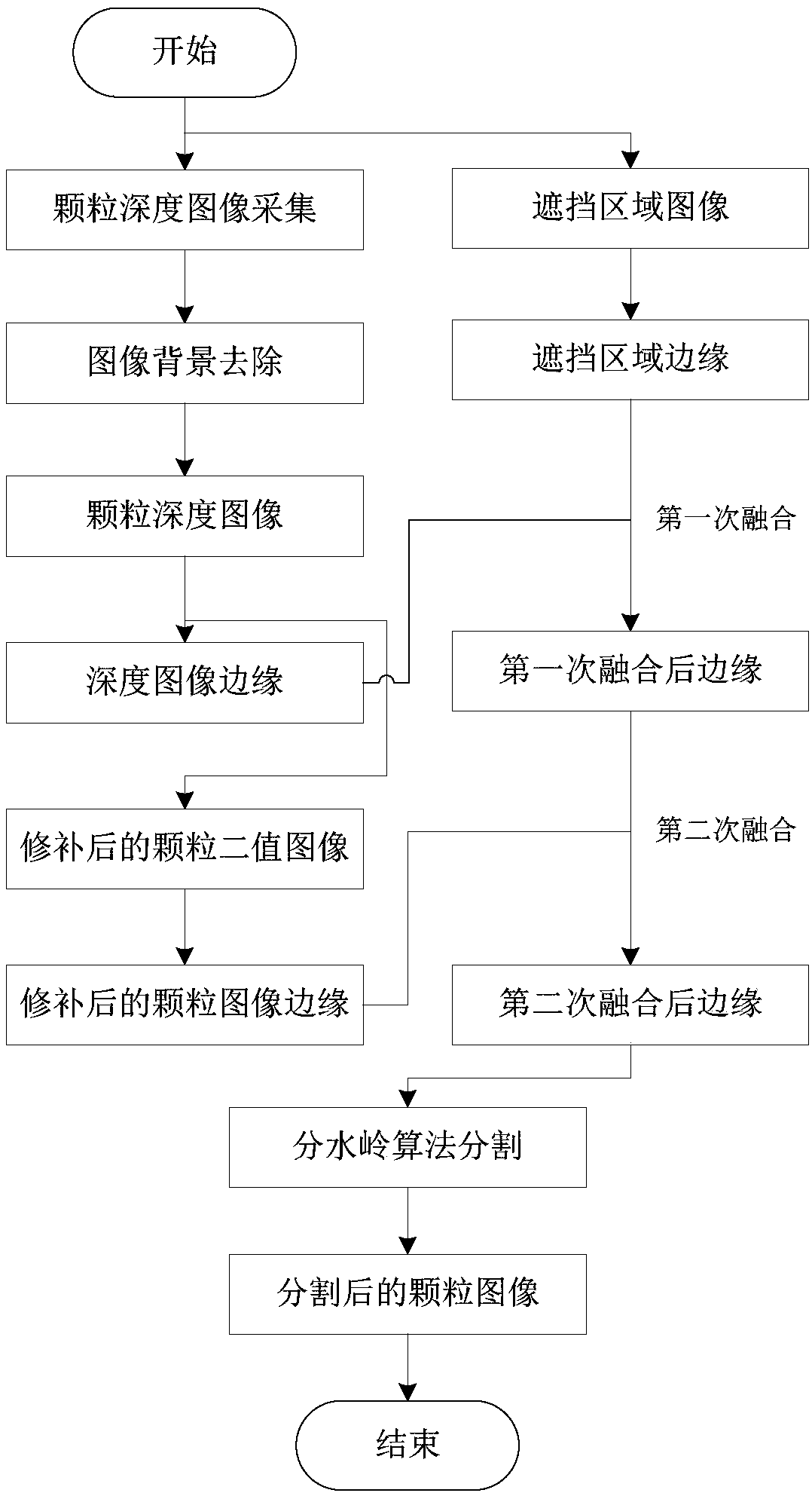A three-dimensional depth image segmentation algorithm based on a multi-edge fusion mechanism
A technology of depth image and segmentation algorithm, applied in image analysis, image enhancement, image data processing, etc., can solve the problem of incomplete particle image, achieve the effect of ensuring integrity and reducing over-segmentation and under-segmentation
- Summary
- Abstract
- Description
- Claims
- Application Information
AI Technical Summary
Problems solved by technology
Method used
Image
Examples
Embodiment Construction
[0057]The 3D vision technology based on structured light has become a very competitive characterization solution for particle industrial detection due to its fast scanning speed, low requirements on the imaging environment, and compared with 2D vision technology, it can effectively characterize the 3D characteristics of particles. However, due to the widespread existence of problems such as laser occlusion or camera occlusion, there are problems such as incompleteness in the edge of the depth image of the scanned particle, which in turn will affect the accuracy of the particle characterization results. In order to solve this problem, this algorithm is based on three different particle edge images, and uses two fusion algorithms to generate particle edge images. Finally, according to the characteristics of the depth image, the particle segmentation is realized by combining the watershed algorithm. The concrete steps of the inventive method are as follows:
[0058] A three-dimen...
PUM
 Login to View More
Login to View More Abstract
Description
Claims
Application Information
 Login to View More
Login to View More - Generate Ideas
- Intellectual Property
- Life Sciences
- Materials
- Tech Scout
- Unparalleled Data Quality
- Higher Quality Content
- 60% Fewer Hallucinations
Browse by: Latest US Patents, China's latest patents, Technical Efficacy Thesaurus, Application Domain, Technology Topic, Popular Technical Reports.
© 2025 PatSnap. All rights reserved.Legal|Privacy policy|Modern Slavery Act Transparency Statement|Sitemap|About US| Contact US: help@patsnap.com



